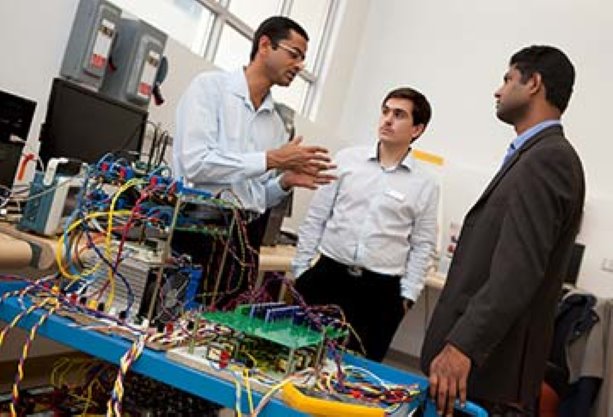A future state-of-the-art smart grid laboratory at Ryerson University aims to spark new energy solutions and innovations through the research of the school’s engineering students.
“It going to be a sandbox for students to learn on the smart grid technologies,” said Daniel Peloquin, president of Schneider Electric Canada, the company collaborating with the university to build the lab.
The facility will house a small distribution system at Ryerson’s Centre for Urban Energy and feature a substation, switchboard, metering equipment, feeder automation equipment and real-time software provided by Schneider Electric.
Related:
Ontario government supports Ryerson to create unique smart grid laboratory
The lab will allow students to take on different scenarios and address current energy challenges.
“Students will be able to use this to deploy and attempt solutions,” said Peloquin.
“They’ll be able to configure the software to see how the network would react to certain stress situations.”
The facility’s main purpose is to expand smart grid education, research and pilot testing.
“We can do testing of different things like renewable sources; solar panel, energy storage, metering and measurement devices,” said Bala Venkatesh, academic director for the Centre of Urban Energy.
The joint project between Schneider and Ryerson is the first of its kind in Canada and Venkatesh added the hands-on experience will give students the advantage once they hit the job market.
Educators at the lab will mostly consist of Ryerson professors and the occasional Schneider Electric employee to walk students through specific software developed by the company.
Peloquin says the lab aims to look at ways to improve energy distribution in urban areas, which is where most of Ontario’s population currently resides in. He says 86 per cent of people in the province live in cities.
“A lot of the energy that is consumed and a lot of the waste comes from cities,” he said.
“It made a lot of sense for us to team up with Ryerson because they’re located in the heart of Toronto so therefore I think they understand the challenges that cities undergo and how the smart grid can help them alleviate the challenges.”
As the demand to create cleaner energy continues to expand, developers of the smart grid project hope the lab will innovate solutions to better manage renewable energy on the grid.
Peloquin says the current energy network is not equipped to effectively manage the different variables such as the instability and mobility of renewable energy.
“The sun doesn’t shine every day, the wind doesn’t blow every day,” he said.
“As we’re shutting down the coal fire generating stations, which were very stable, and we’re replacing them with a renewables mix, the challenge for the network is to balance a very volatile input with an output that is fairly consistent and stable.”
For instance, Peloquin factors in the growing popularity of electric cars and the unpredictable mobility that comes with it.
“Today we know where the consumption is going to be but tomorrow, with more and more electric vehicles, all of a sudden if you plug your car in Scarborough or in Markham, well that changes how the energy flows,” he added.
“The biggest challenge right now…is balancing all of those new things.”
“What students will learn is the variability of the system and ‘what can you do to continue to balance the system at any point in time so the system doesn’t collapse and cause failures,’”
Venkatesh says there are already plans to conduct more research and tests on photovolatic panels and the effect it will have on the distribution system.
The $1-million lab is expected to be fully operational in July 2014.



Recent Comments
comments for this post are closed